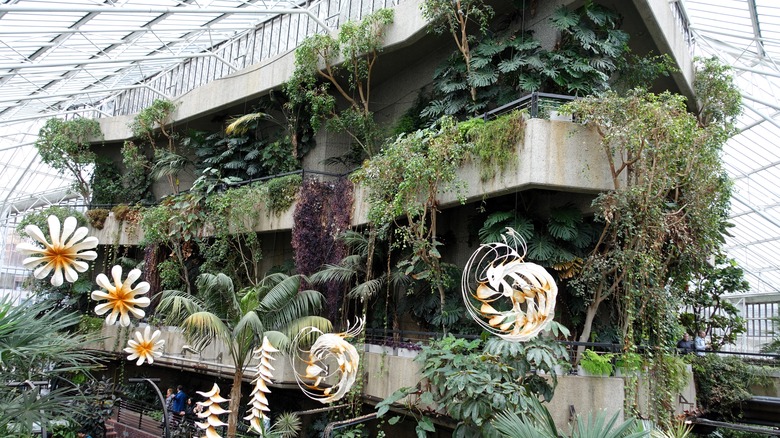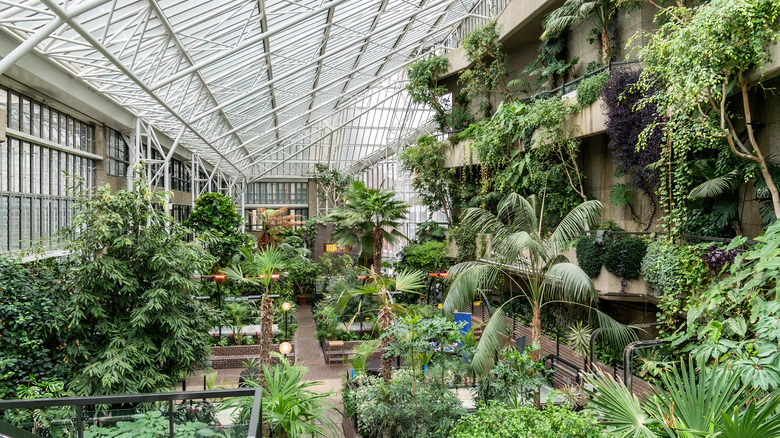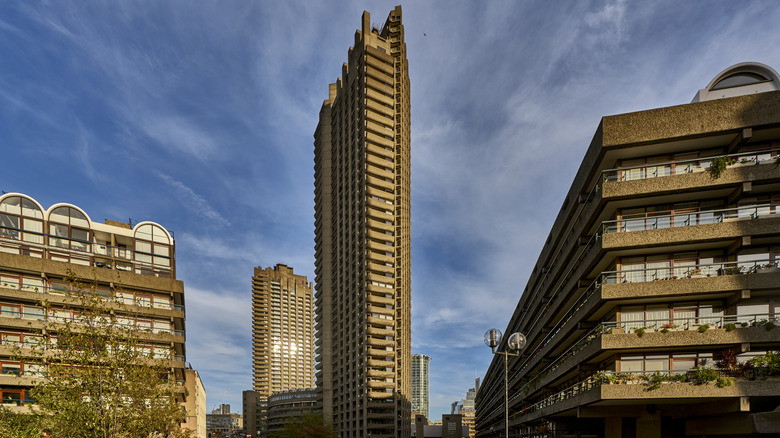An English Indoor Garden With Brutalist Architecture Feels Like 'The Last Of Us' Come To Life
Despite being one of the world's leading arts centers, the Barbican remains something of a hidden gem in London, England. For those in the know, it is at the center of London's thriving art scene and one of the best places to enjoy cinema, theater, dance, live music, and art exhibitions in the city. It is also an extraordinary architectural site, but, unfortunately, it is often missed by visitors to the U.K.
Exploring this Brutalist icon is an incredible experience for Londoners and travelers alike, but there is a secret lurking at the heart of this fascinating complex that even regular visitors sometimes don't know about. Looking at the grey concrete blocks of the sprawling Barbican building from the outside, you'd never guess that it houses the second-largest glass conservatory in London.
But, indeed, sprouting from the harsh greyness of this Grade II-listed Brutalist complex is a gorgeous, chaotic mess of tumbling tropical greenery that feels like nature is taking over and reclaiming urban space. Like something straight out of "The Last of Us," the Barbican Conservatory brings a new meaning to the phrase "concrete jungle."
A tropical oasis in the heart of London
The Barbican Conservatory is one of London's most unique and unusual treasures. Around 1,500 species of plants climb up and around the concrete structure, and birds, fish, and terrapin turtles live in the carefully created pools. Choose the best time to visit London, and the rays of sunshine streaming through the 23,000 square-foot glass ceiling will transport you to a lush, verdant rainforest paradise — a tranquil place to shut out the hubbub of the city outside.
Before opening in 1984, the Conservatory was originally just a space to conceal the Barbican Theatre's fly tower, from which the rigging system and scenic items for the various stages below were lowered into place. However, between 1980 and 1981, following designs by Chamberlain, Powell, and Bon, a tropical jungle of rare and endangered species was planted, creating a magnificent explosion of greenery and vivid exotic flowers.
Part of the reason the Barbican Conservatory isn't better known is that it can be tricky to gain access. Although it is one of the best free things to do in London, it only opens on selected days of the week each month and requires online booking. The Barbican releases a limited number of entry tickets a month beforehand, and spaces go fast, so it is always worth planning to visit in advance. However, few tickets are released on open days at 9.30 a.m.
London's ugliest building or a utopian vision of a better way to live?
The Barbican itself divides opinion like no other tourist attraction in London. It was originally built on a site devastated by bombing during World War II and incorporates a cinema, theaters, concert halls, art galleries, a school, a library, a church, an artificial lake, and one of the most ingenious and imaginative social housing projects in the U.K. Imagined as a new, radical way of living, the utopian vision of its designers was to create a city within a city, with arts, culture, convenience, and beauty all incorporated as basic necessities of life. It even has its own eponymous subway station, making the metro the best way to get around and enjoy more efficient sightseeing.
While at first glance the design might seem stark, the Barbican took inspiration from a variety of sources, from the Roman and Medieval foundations of London to Mediterranean Modernism and contemporary Scandinavian design. When Queen Elizabeth II cut the ribbon and opened the building in 1982, she described it as "one of the wonders of the modern world" (via BBC). However, the philosophies of Brutalist architecture are not to everyone's taste, and the Barbican has its fair share of detractors. In fact, it was voted London's ugliest building in a public poll in 2003. Whether you love the straight lines and monochrome simplicity of the Barbican or can't understand the hype, there's no denying it is an extraordinary space, and its green, tropical heart is one of London's best and most bizarre attractions.


